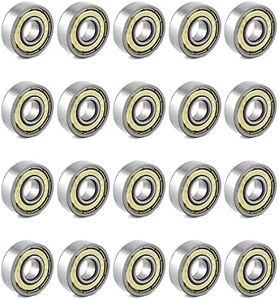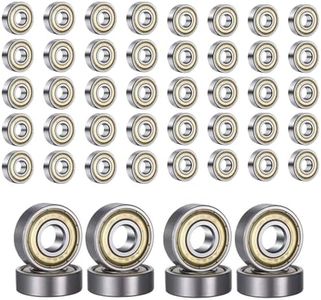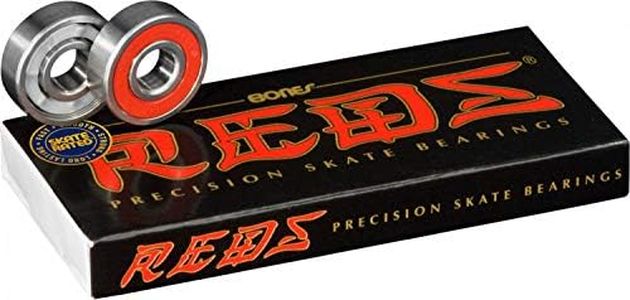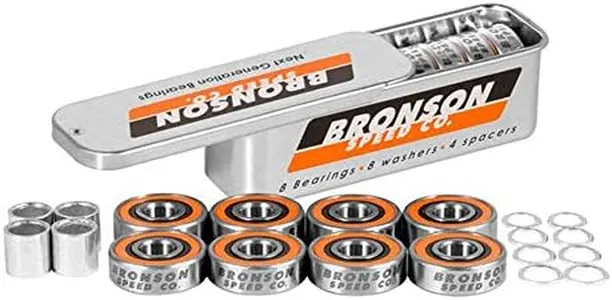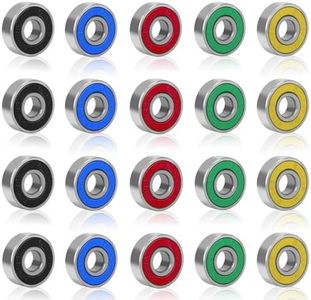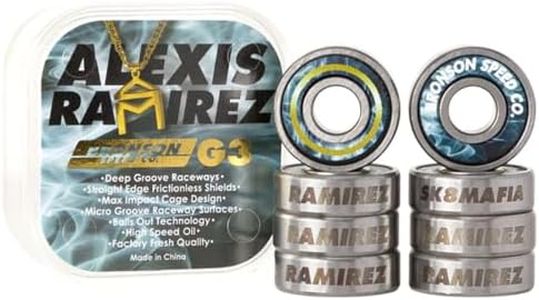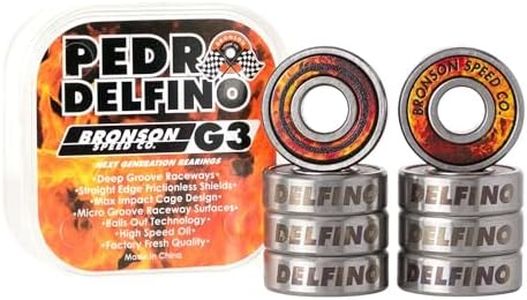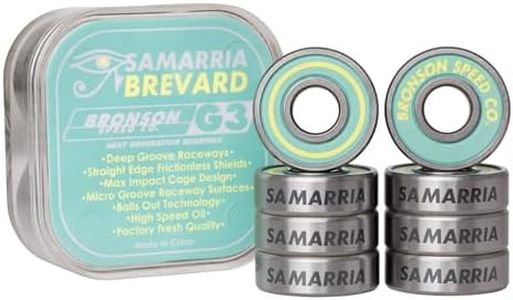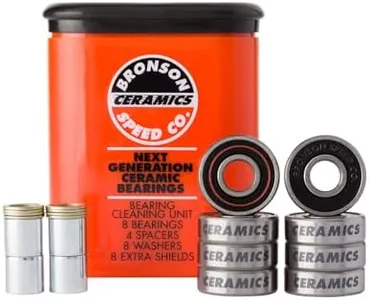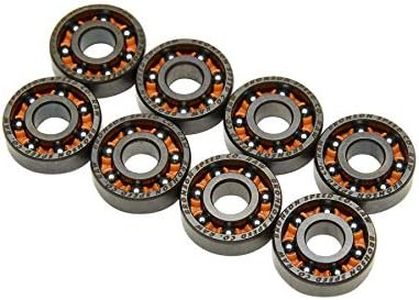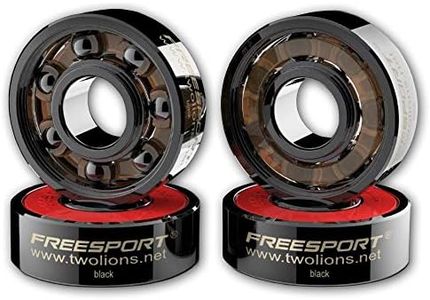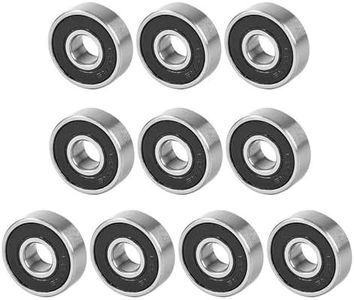We Use CookiesWe use cookies to enhance the security, performance,
functionality and for analytical and promotional activities. By continuing to browse this site you
are agreeing to our privacy policy
10 Best Longboard Bearings
From leading brands and best sellers available on the web.By clicking on a link to a third party's website, log data is shared with that third party.
Buying Guide for the Best Longboard Bearings
When you're picking longboard bearings, you're choosing a small but critical part of your board. Bearings let your wheels spin freely, playing a big role in how fast and smoothly you roll. Whether you're cruising, bombing hills, or navigating city streets, the right bearings can improve your ride dramatically. It's important to understand the main features and specifications so you can match your choice to how and where you ride.ABEC RatingThe ABEC rating is a standard that describes the precision and tolerance of the bearing. You'll see numbers like ABEC 3, 5, 7, or 9. Generally, higher numbers mean tighter tolerances and smoother, faster spin. But, for longboarding, a super high ABEC rating isn't everything; sometimes durability and protection against dirt are more important, especially for outdoor use. Casual riders can go with mid-range numbers, while speed-focused riders might prefer higher ratings—but don't assume higher is always better for your needs.
Material (Steel vs. Ceramic)Longboard bearings are usually made from steel or ceramic. Steel bearings are common, durable, and affordable, offering good performance for most riders. Ceramic bearings are lighter and can handle heat better, spinning faster and lasting longer with less maintenance, but they tend to be pricier. If you often ride in wet or dusty conditions, ceramics might last longer, but steel is usually just fine for most recreational longboarders.
Sealed vs. Open BearingsSome bearings are sealed, meaning they have rubber or metal shields that keep dirt and moisture out, reducing maintenance. Open bearings lack these shields, making it easier to clean and lube them, but they also get dirty more quickly. If you want to spend less time on maintenance or ride in dirty/wet places, sealed bearings are the safe choice. Open bearings are best for those who want to tinker and clean them often.
Lubrication (Grease vs. Oil)Bearings are lubricated with either grease or oil. Greased bearings spin slower at first but are more protected from dust and need less frequent maintenance—great for casual cruising or rough conditions. Oiled bearings spin faster and offer lower resistance, which appeals to racers or those after the smoothest roll, but they must be cleaned and oiled more often.
Durability and MaintenanceSome bearings are designed to withstand heavy use, moisture, and impacts. Durability is influenced by material, shielding, and lubrication. If you ride aggressively, on rough roads, or in varied weather, picking bearings marketed for durability saves hassle and money in the long run. Think about how often you're willing to clean and check your bearings—more durable models require less frequent care.
